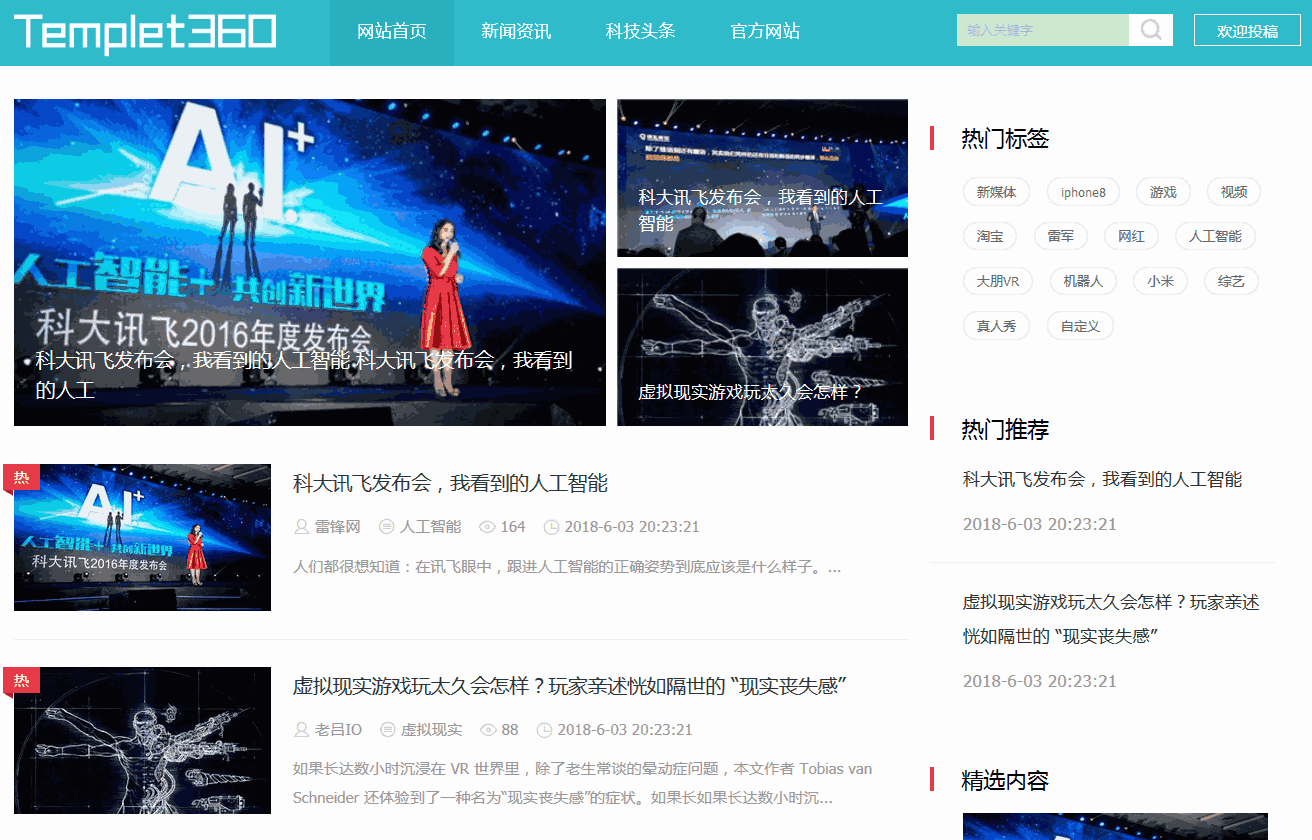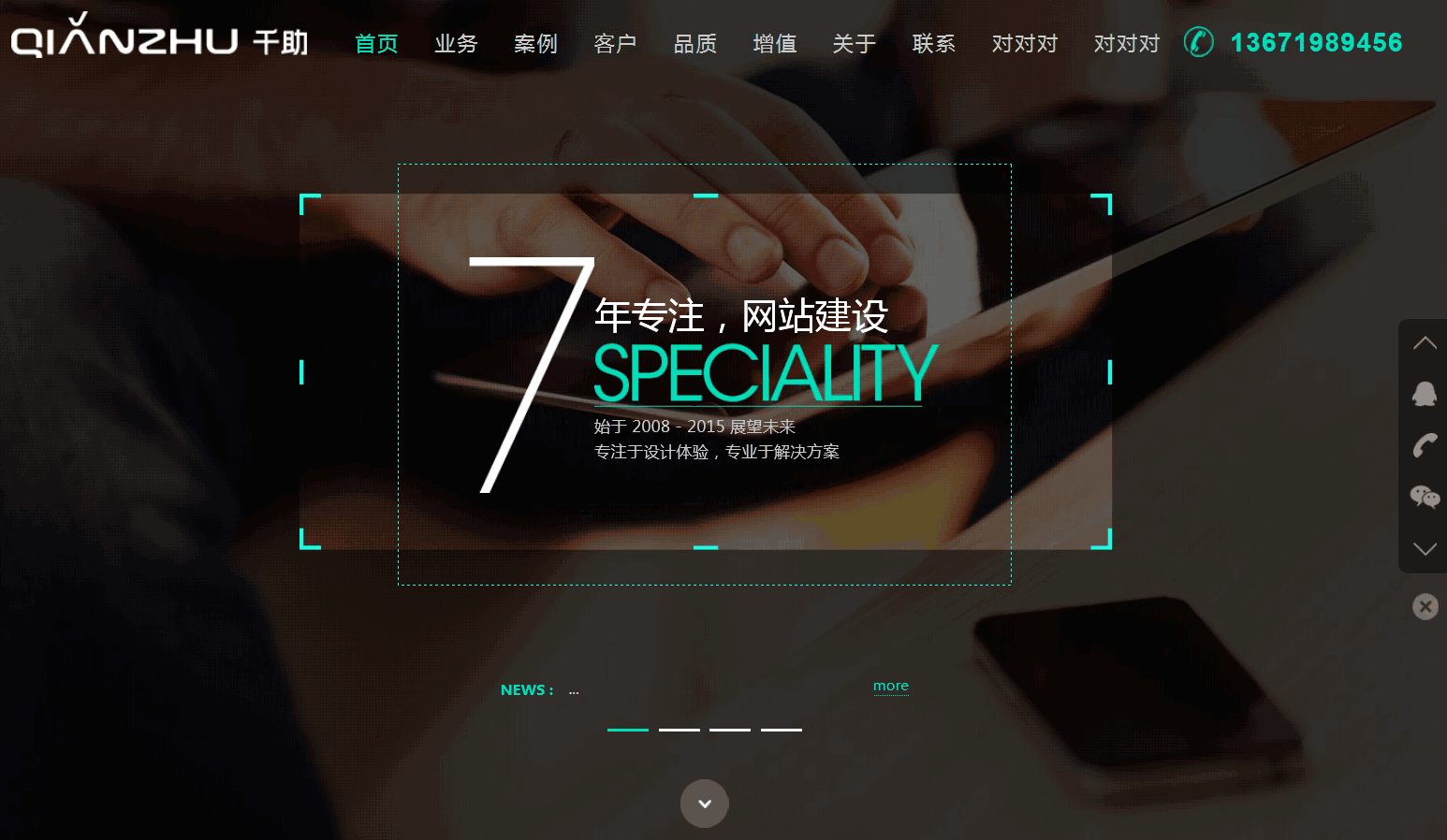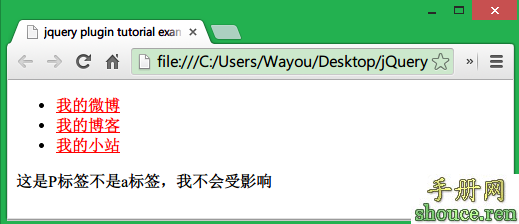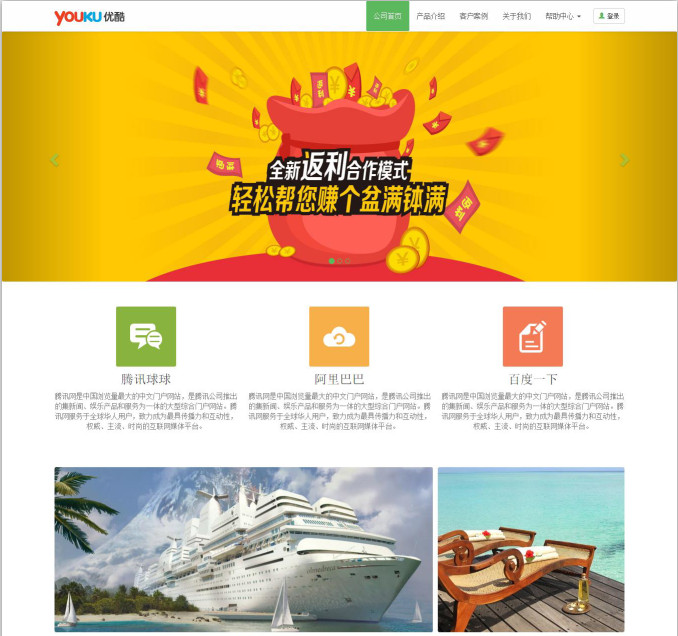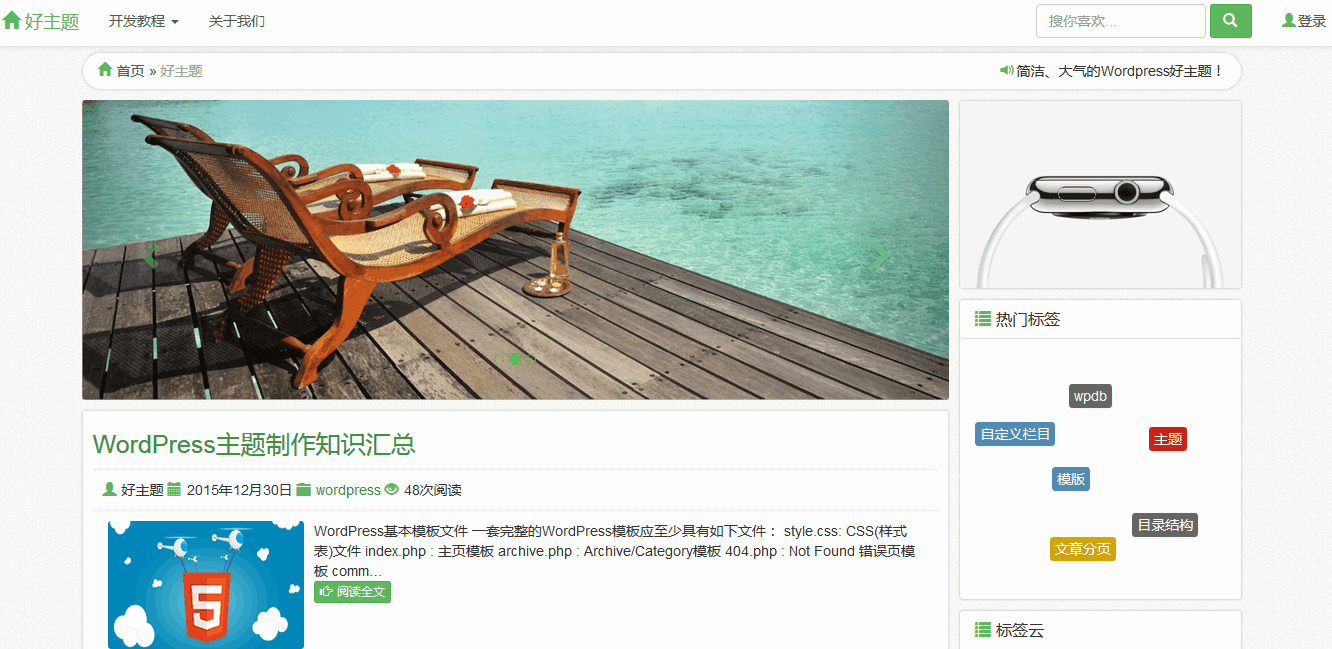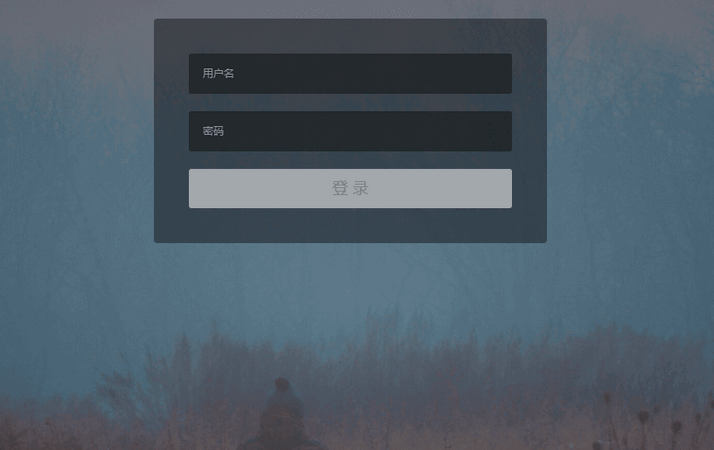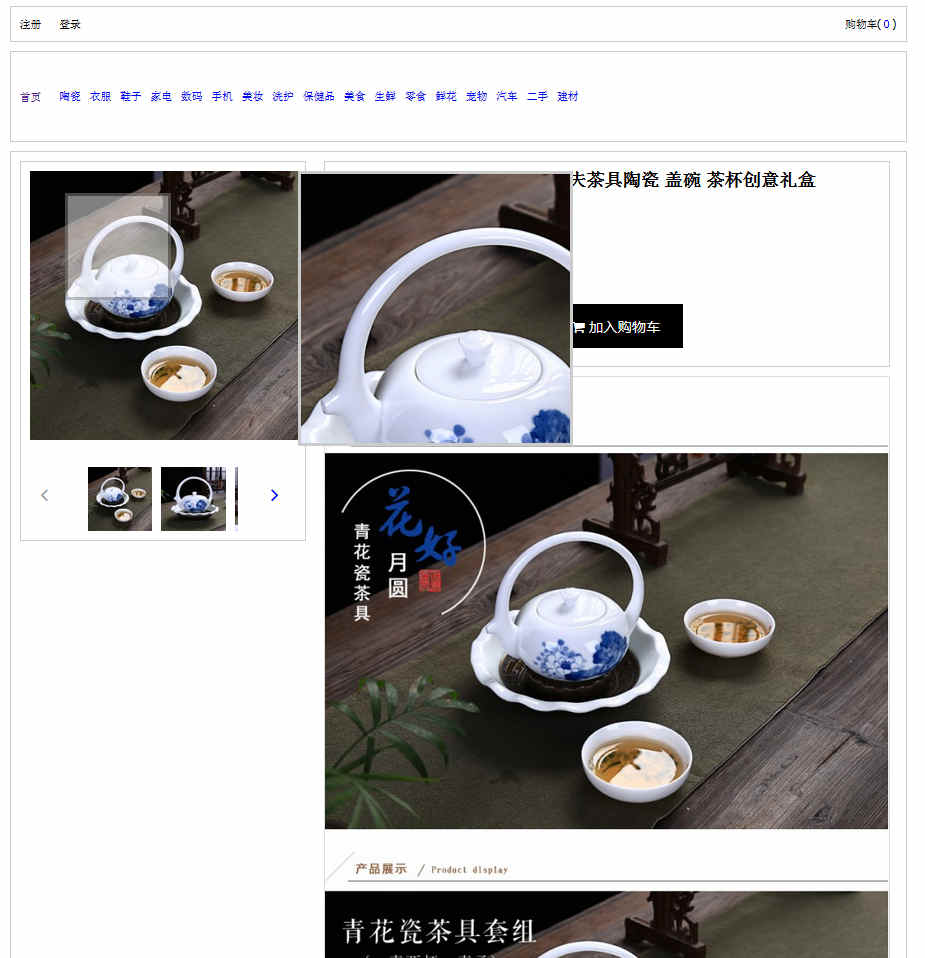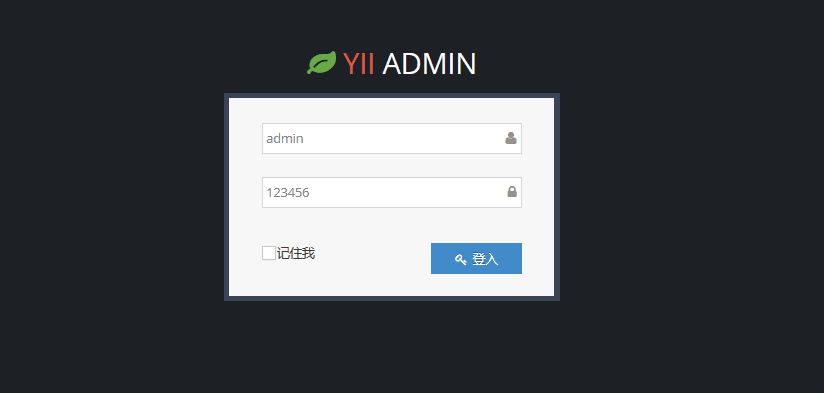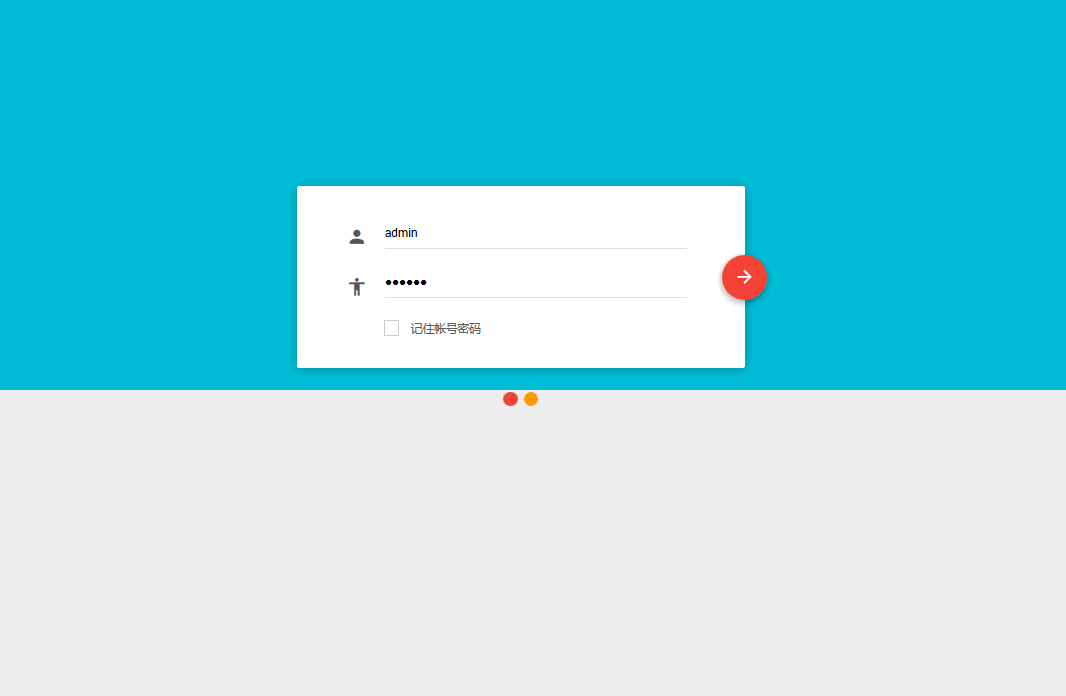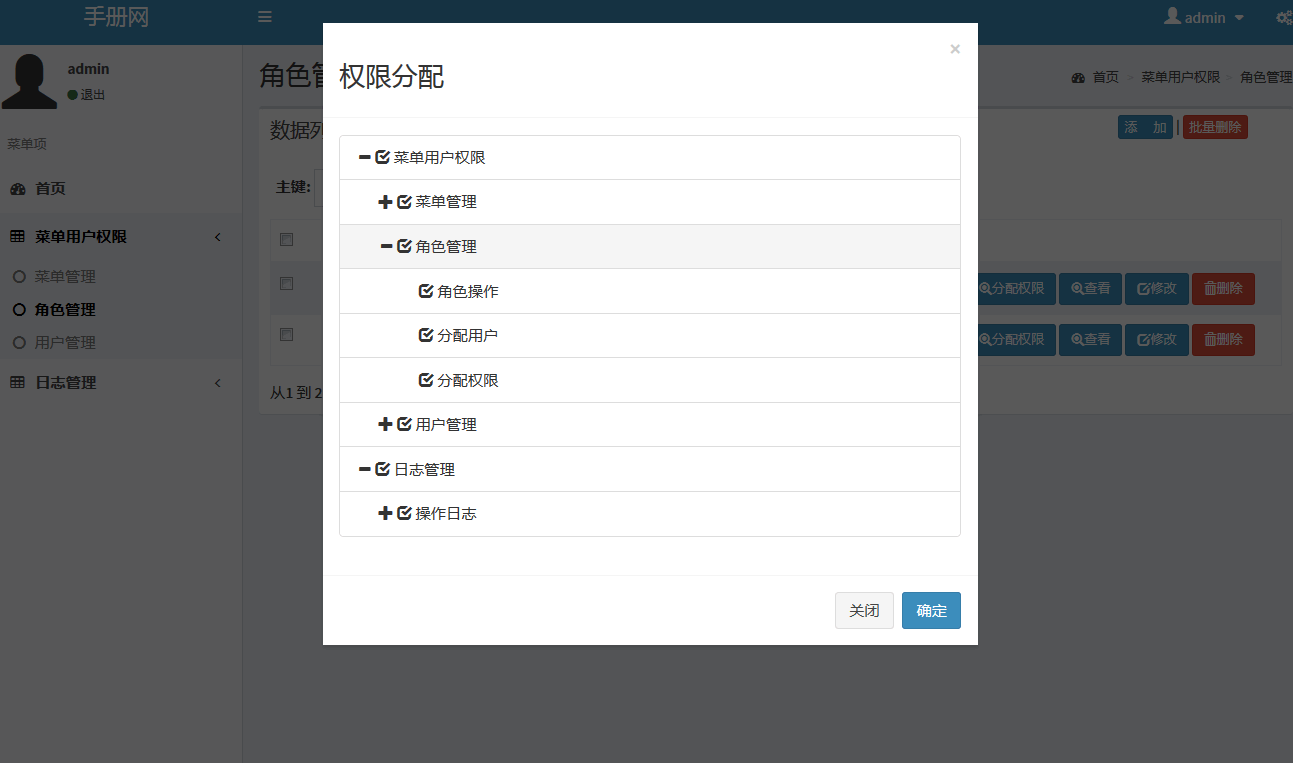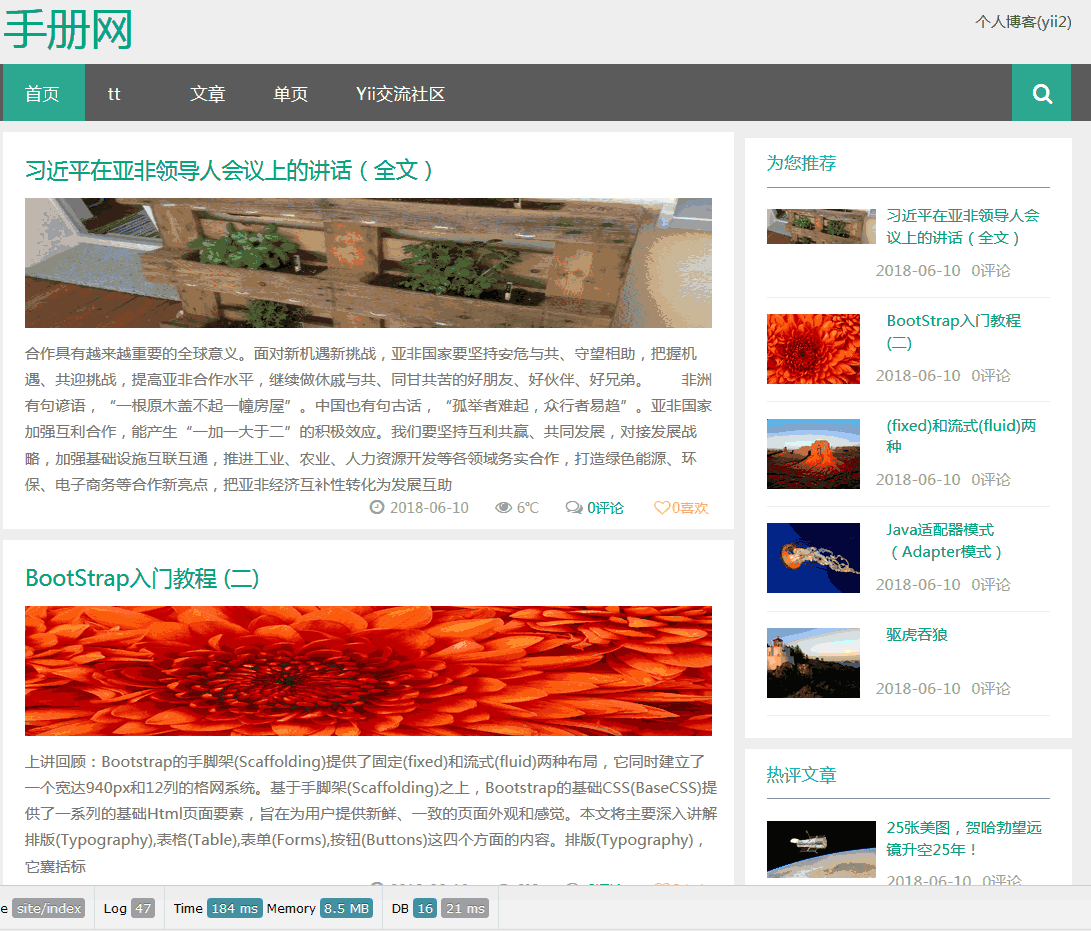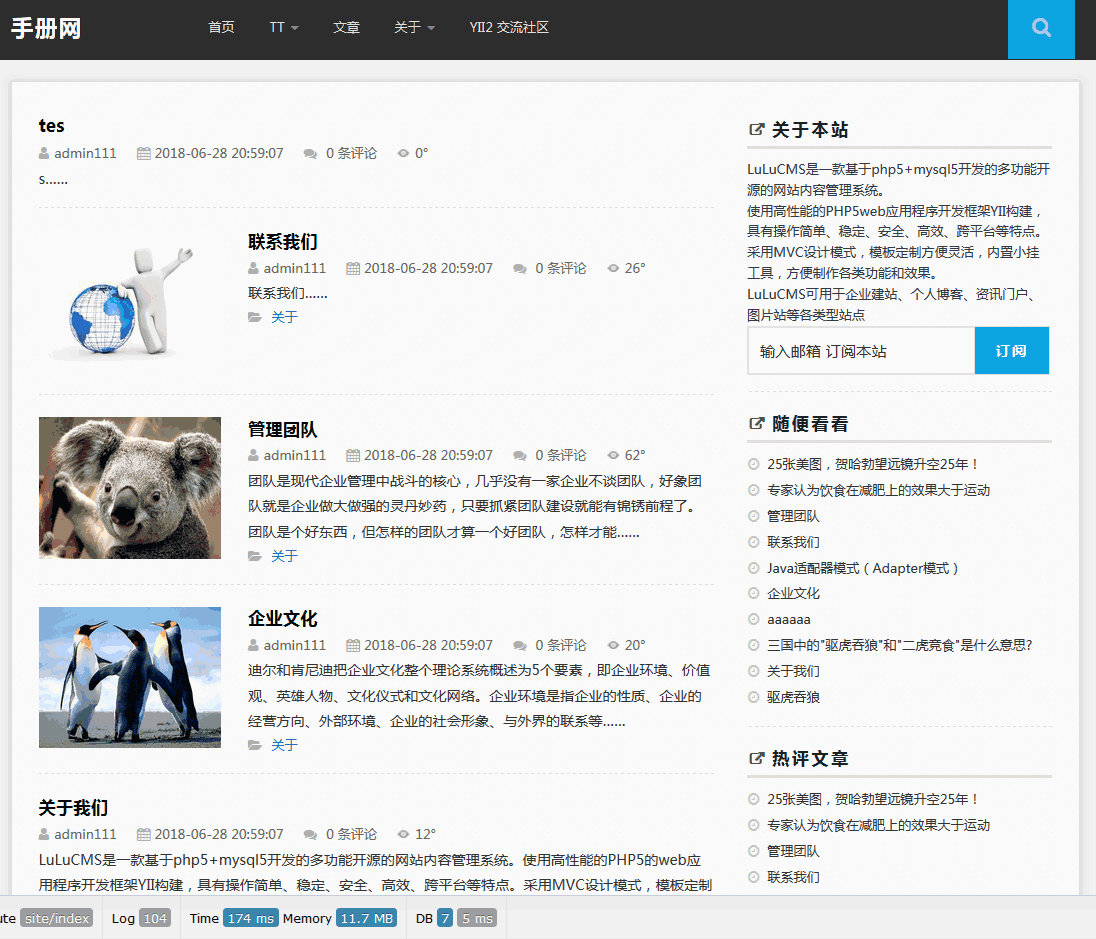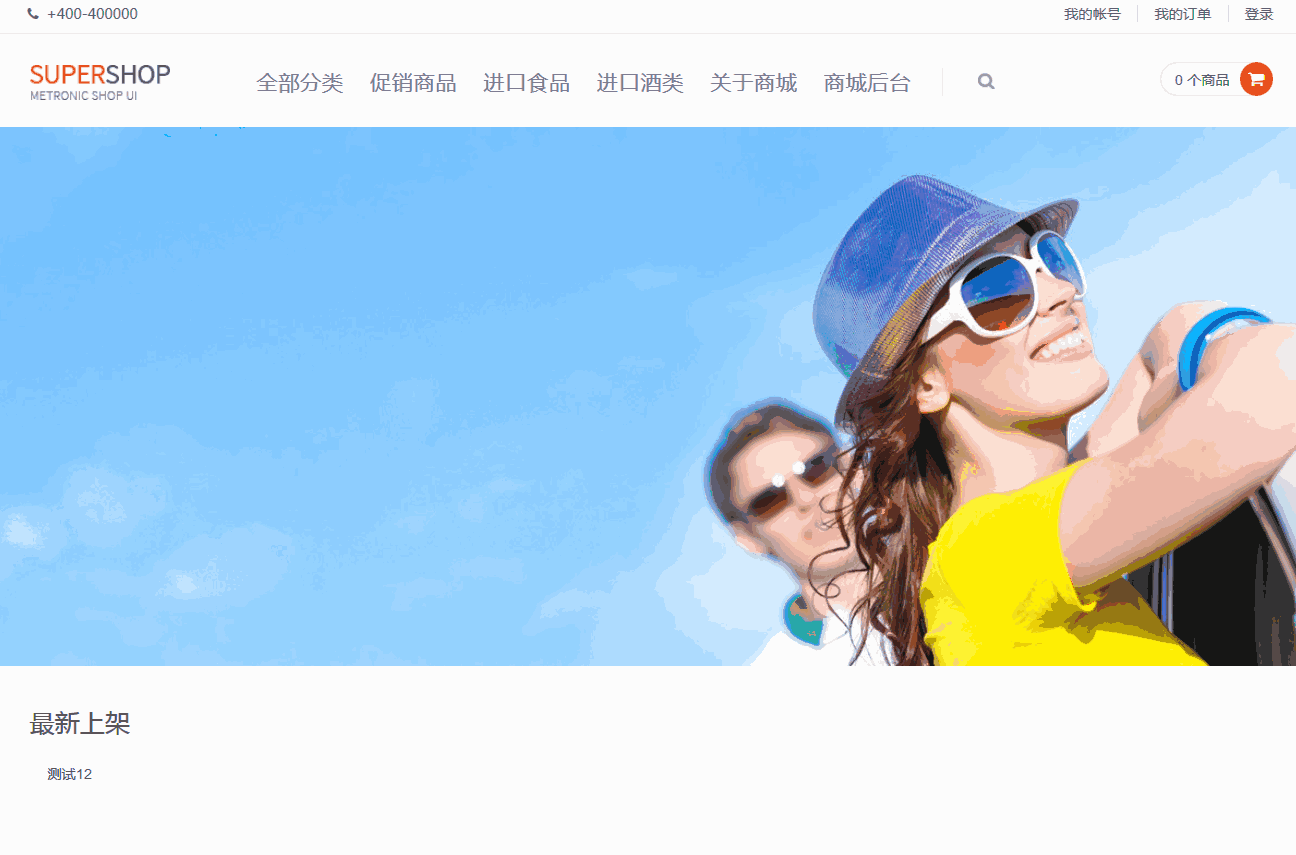WordPress 插件开发教程 – Part-4 – 与WordPress整合
本节内容
- 创建菜单和子菜单
- 创建小工具( widgets )和控制板小工具( dashboard widgets )
- 为内容定义meta内容框
- 设计并装饰插件
-
在开发插件的时候与 WordPress 整合是一个关键步骤。WordPress 提供多种不同的方法来整合插件,包括添加顶级菜单和子菜单项,创建小工具和控制板小工具,以及为你的内容页面添加meta内容框
本节你会学到如果正确的在 WordPress 的各种不同地方整合插件。也会学到插件可用到的合适的设计和装饰方法,来为用户提供一致的用户界面体验。
添加菜单和子菜单
你创建的插件都需要一些菜单项,通常链接到插件的选项配置页面。WordPress 提供创建两种菜单的方法:顶级菜单或者子菜单。
创建顶级菜单
第一种菜单是直接添加到 WordPress 管理页面菜单列表中的顶级菜单。例如,Settings( 设置 ) 是一个顶级菜单。顶级菜单是有多个选项页面的插件常用的。要注册一个顶级菜单,使用 add_menu_page() 函数。
|
1
2
3
|
<?php add_menu_page( page_title, menu_title, capability, menu_slug,
function, icon_url, position );
?> |
add_menu_page() 所接受的参数:
- page_title – 页面的 title, 和显示在 <title> 标签里的一样
- menu_title – 在控制面板中显示的名称
- capability – 要浏览菜单所要的最低权限
- menu_slug – 要引用该菜单的别名; 必须是唯一的
- function – 要显示菜单对应的页面内容所调用的函数
- icon_url – 菜单的 icon 图片的 URL
- position – 出现在菜单列表中的次序
下面演示创建菜单的过程。使用 admin_menu 动作钩子来触发菜单代码。不管是顶级菜单还是子菜单,这个钩子都适用。
|
1
2
3
4
5
6
7
8
9
10
11
12
13
14
|
<?php add_action(
'admin_menu',
'boj_menuexample_create_menu'
);
function
boj_menuexample_create_menu() {
// 创建顶级菜单
add_menu_page(
'My Plugin Settings Page',
'Menu Example Settings',
'manage_options',
__FILE__,
'boj_menuexample_settings_page',
plugins_url(
'/images/wp-icon.png', __FILE )
);
}
?> |
admin_menu 动作钩子调用了自定义的 boj_menuexample_create_menu() 函数。接着调用 add_menu_page() 函数把自定义的菜单注册到 WordPress。菜单的名字为 Menu Example Settings, 需要 manage_options 权限( 也就是管理员 )才能访问。并设置了位于插件下面 /images 目录中的 icon。
添加子菜单
现在已经有了顶级菜单,可以为顶级菜单添加子菜单项了。要注册一个子菜单,使用 add_submenu_page() 函数。
|
1
2
3
|
<?php add_submenu_page( parent_slug, page_title, menu_title, capability, menu_slug,
function );
?> |
与上面的 add_menu_page() 函数类似。要注意的是:
parent_slug – 父级菜单的别名( 前面提到的 menu_slgu )。接着上面的例子继续注册子菜单:
|
1
2
3
4
5
6
7
8
9
10
11
12
13
14
15
16
17
18
19
20
21
22
23
24
25
26
27
28
29
30
31
32
33
34
35
36
37
38
39
40
41
|
<?php add_action(
'admin_menu',
'boj_menuexample_create_menu'
);
function
boj_menuexample_create_menu() {
// 创建顶级菜单
add_menu_page(
'My Plugin Settings Page',
'Menu Example Settings',
'manage_options',
__FILE__,
'boj_menuexample_settings_page',
plugins_url(
'/images/wp-icon.png', __FILE )
);
// 创建子菜单
add_submenu_page(
__FILE__,
'About My Plugin',
'About',
'manage_options',
__FILE__.'_about',
boj_menuexample_about_page
);
add_submenu_page(
__FILE__,
'Help with My Plugin',
'Help',
'manage_options',
__FILE__.'_help',
boj_menuexample_help_page
);
add_submenu_page(
__FILE__,
'Uninstall My Plugin',
'Uninstall',
'manage_options',
__FILE__.'_uninstall',
boj_menuexample_uninstall_page
);
}
?> |
上面的代码在主菜单下创建了三个子菜单:About,Help,和 Uninstall。每一个子菜单链接到一个不同的包含子菜单页面内容的自定义函数。
向已经存在的菜单中添加一个菜单项
如果你的菜单只有一个单独的设置页面,就没必要创建一个自定义的顶级菜单了。你可以简单的把它添加到已经存在菜单下。例如 Settings 菜单。
WordPress 提供许多不同的函数像一个已经存在的默认菜单添加一个子菜单。其中一个函数是 add_options_page() 。add_options_page() 函数向 Settings 菜单添加子菜单项。
|
1
2
3
|
<?php add_options_page( page_title, menu_title, capability, menu_slug,
function );
?> |
参数和上面两个函数类似。
示例:
|
1
2
3
4
5
6
7
8
9
10
11
12
13
14
|
<?php add_action(
'admin_menu',
'boj_menuexample_create_menu'
);
function
boj_menuexample_create_menu() {
// 在 Settings 下添加子菜单
add_options_page(
'My Plugin Settings Page',
'Menu Example Settings',
'manage_options',
__FILE__,
'boj_menuexample_settings_page'
);
}
?> |
下面是所有可用的添加子菜单的函数:
- add_dashboard_page
- add_posts_page
- add_media_page
- add_links_page
- add_pages_page
- add_comments_page
- add_theme_page
- add_plugins_page
- add_users_page
- add_management_page
- add_options_page
使用小工具 ( widgets )
小工具可以很好的向插件使用者提供显示插件信息或者数据的方法。WordPress 提供了一系列和小工具相关的 API 来使用小工具。这一节会介绍创建小工具,添加并保存小工具的选项,以及在小工具中显示插件信息。
创建小工具
在 WordPress 中,使用 WP_Widget 类来创建小工具。了解一下这个类有助于理解小工具是如何工作的。
|
1
2
3
4
5
6
7
8
9
10
11
12
13
14
15
16
17
18
19
|
<?php class
My_Widget extends
WP_Widget {
function
My_Widget() {
// processes the widget 构造函数
}
function
form( $instance
) {
// 在管理面板中显示小工具的表单
}
function
update( $new_instance,
$old_instance ) {
// 小工具选项的保存过程
}
function
widget( $args,
$instance ) {
// 显示小工具
}
}
?> |
WP_Widget 为你的小工具提供负责不同功能的多个函数。
下面来为你的插件创建一个小工具。这是一个简单的文本小工具,用来保存和显示你喜欢的电影和歌曲。它展示了如何在 WordPress 小工具中保存 text 数据。
这里使用 widgets_init 动作钩子。这个钩子在默认的小工具注册到 WordPress 中之后被触发。
|
1
2
3
4
5
6
7
8
9
|
<?php // 使用 widgets_init 动作钩子来执行自定义的函数
add_action(
'widgets_init',
'boj_widgetexample_register_widgets'
);
// 注册小工具
function
boj_widgetexample_register_widgets() {
register_widget(
'boj_widgetexample_widget_my_info'
);
}
?> |
widgets_init 钩子触发自定义的函数。接着使用 register_widget() 函数来注册小工具,这个函数接受一个参数 — 将要继承( extends ) WP_Widget 的类的类名。你可以使用这个函数注册任意多个小工具。
注册了小工具之后,接着来看小工具类。
|
1
2
3
4
5
6
|
<?php // boj_widgetexample_widget_my_info class
class
boj_widgetexample_widget_my_info extends
WP_Widget {
}
?> |
是用你在注册小工具时定义的唯一的类名来从 WP_Widget 继承一个新类。接下来开始创建小工具。
|
1
2
3
4
5
6
7
8
9
10
|
<?php // process the new widget
function
boj_widgetexample_widget_my_info() {
$widget_ops
= array(
'classname'
=> 'boj_widgetexample_widget_class',
'description'
=> 'Display a user\'s favorite movie and song.'
);
$this->WP_Widget(
'boj_widgetexample_widget_my_info',
'My Info Widget',
$widget_ops );
}
?> |
首先,用一个数组 $widget_ops 来存储小工具的选项:classname 和 description。classname 是添加到 <li> 元素的类名。默认情况下,Sidebars 将所有的小工具都显示成 unordered 列表( ul )。每一个单独的小工具是那个列表中的一个列表项( li ),所以通过添加一个自定义的 classname 和 ID,就可以方便的为小工具定义样式了。description 显示在 外观 => 小工具 下面,描述小工具的功能。
接着,把这个数据值传递给 WP_Widget。传递的第一个值是前面提到的小工具的列表项( li )的 ID 值。第二个值是小工具的名字。最后一个值是前面创建的选项数组。
我们接着来创建小工具的设置表单项。这个小工具接受三个值:标题,最爱的电影,最爱的歌曲。
|
1
2
3
4
5
6
7
8
9
10
11
12
13
14
15
16
17
18
19
20
21
22
|
<?php // 创建小工具的设置表单
function
form($instance) {
$defaults
= array(
'title' =>
'My Info', 'movie'
=> '',
'song' => ''
);
$instance
= wp_parse_args( (array)
$instance,
$defaults );
$title
= $instance['title'];
$movie
= $instance['movie'];
$song
= $instance['song'];
?>
<p>Title: <input
class="widefat"
name="
<?php
echo $this->get_field_name(
'title' ); ?>" type="text"
value="<?php echo esc_attr( $title ); ?>"
/></p>
<p> Favorite Movie: <input
class=”widefat" name="
<?php
echo $this-> get_field_name(
'movie' ); ?>
"type="text"
value=" < ?php echo esc_attr( $movie ); ?> "
/> </p>
<p> Favorite Song: <textarea
class="widefat"
name="
<?php
echo $this-> get_field_name(
'song' ); ?> " />
<?php
echo esc_attr(
$song ); ?> </textarea> </p>
<?php
}
?> |
首先,声明 $defaults 变量来设置每个选项的默认值。接着填充实例的值。这样就已经保存了小插件的设置了。如果新建一个小工具到 sidebar,没有保存任何设置,那么这些值就是空的。
小工具设置的最后一部分就是显示提供信息输入的表单项。使用三个标准的 HTML input text 字段分别给:title,movie,和 song。在这里不需要提供 <form> 标签或提交按钮。widget 类会自动处理这些。同时使用 esc_attr() 函数来得到之前保持的值并显示在字段上。
接下来使用 widget 类的 update 函数来保持这些设置。
|
1
2
3
4
5
6
7
8
9
10
11
|
<?php // 保存小工具设置
function
update( $new_instance,
$old_instance ) {
$instance
= $old_instance;
$instance['title'] =
strip_tags(
$new_instance['title'] );
$instance['movie'] =
strip_tags(
$new_instance['movie'] );
$instance['song'] =
strip_tags(
$new_instance['song'] );
return
$instance;
}
?> |
如上所示,widget 类处理了所有的保存工作。你只用简单的为每一个小工具的设置传递 $new_instance 的值就可以了。一定要注意任何用户输入的数据,这里使用了 PHP 函数 strip_tags()。
创建小工具的最后一步就是在 sidebar 上显示小工具。这里使用 widget 类的 widget 函数来完成。
|
1
2
3
4
5
6
7
8
9
10
11
12
13
14
15
16
|
<?php // 显示小工具
function
widget( $args,
$instance ) {
extract(
$args );
echo
$before_widget;
$title
= apply_filters( 'widget_title',
$instance['title'] );
$movie
= empty(
$instance['movie'] ) ?
' ' :
$instance['movie'];
$song
= empty(
$instance['song'] ) ?
' ' :
$instance['song'];
if
( !empty(
$title ) ) {
echo $before_title
. $title
. $after_title; };
echo
'<p> Fav Movie: ' .
$movie . '</p>';
echo
'<p> Fav Song: ' .
$song . '</p>';
echo
$after_widget;
}
?> |
第一步是提取 $args 参数。这个变量保存着全局的模板值,比如 $before_widget 和 $after_widget。这些值可以在注册一个 sidebar 的时候定义,从而可以自定义包围你的小工具的代码,例如添加自定义的 <div> 标签。
接着将 $title 变量赋值为小工具的 title。给 title 使用 widget_title 过滤器钩子。这就使得其他开发者可以根据需要修改小工具的 title。同样对 $movie 和 $song 变量赋值。
现在已经定义了小工具的所有变量,是时候显示它们了。首先显示 $title 变量。用 $before_title 和 $after_title 变量包住它很重要。这两个全局变量同样可以在注册一个 sidebar 的时候自定义。接着显示 favorite movie 和 favorite song 的值。最后记住用 $after_widget 全局变量做结束。
恭喜你创建成功了一个 WordPress 小工具。现在可以添加并配置你的小工具了。接着你的小工具就显示到了 sidebar 中。
下面我们把整个小工具的代码放在一起回顾一下:
|
1
2
3
4
5
6
7
8
9
10
11
12
13
14
15
16
17
18
19
20
21
22
23
24
25
26
27
28
29
30
31
32
33
34
35
36
37
38
39
40
41
42
43
44
45
46
47
48
49
50
51
52
53
54
55
56
57
58
59
60
61
62
63
64
65
66
67
68
69
70
71
72
73
74
75
76
77
78
|
<?php /*
Plugin Name: Widget Example Plugin
Plugin URI:
http://example.com/wordpress-plugins/my-plugin
Description: A plugin to create widgets in WordPress
Version: 1.0
Author: Brad Williams
Author URI:
http://wrox.com
License: GPLv2
*/
// 使用 widgets_init 动作钩子来执行自定义的函数
add_action(
'widgets_init',
'boj_widgetexample_register_widgets'
);
// 注册小工具
function
boj_widgetexample_register_widgets() {
register_widget(
'boj_widgetexample_widget_my_info'
);
}
// boj_widgetexample_widget_my_info class
class
boj_widgetexample_widget_my_info extends
WP_Widget {
// process the new widget
function
boj_widgetexample_widget_my_info() {
$widget_ops
= array(
'classname'
=> 'boj_widgetexample_widget_class',
'description'
=> 'Display a user\'s favorite movie and song.'
);
$this->WP_Widget(
'boj_widgetexample_widget_my_info',
'My Info Widget',
$widget_ops );
}
// 创建小工具的设置表单
function
form($instance) {
$defaults
= array(
'title' =>
'My Info', 'movie'
=> '',
'song' => ''
);
$instance
= wp_parse_args( (array)
$instance,
$defaults );
$title
= $instance['title'];
$movie
= $instance['movie'];
$song
= $instance['song'];
?>
<p>Title: <input
class="widefat"
name="
<?php
echo $this->get_field_name(
'title' ); ?>" type="text"
value="<?php echo esc_attr( $title ); ?>"
/></p>
<p> Favorite Movie: <input
class=”widefat" name="
<?php
echo $this-> get_field_name(
'movie' ); ?>
"type="text"
value=" < ?php echo esc_attr( $movie ); ?> "
/> </p>
<p> Favorite Song: <textarea
class="widefat"
name="
<?php
echo $this-> get_field_name(
'song' ); ?> " />
<?php
echo esc_attr(
$song ); ?> </textarea> </p>
<?php
}
// 保存小工具设置
function
update( $new_instance,
$old_instance ) {
$instance
= $old_instance;
$instance['title'] =
strip_tags(
$new_instance['title'] );
$instance['movie'] =
strip_tags(
$new_instance['movie'] );
$instance['song'] =
strip_tags(
$new_instance['song'] );
return
$instance;
}
// 显示小工具
function
widget( $args,
$instance ) {
extract(
$args );
echo
$before_widget;
$title
= apply_filters( 'widget_title',
$instance['title'] );
$movie
= empty(
$instance['movie'] ) ?
' ' :
$instance['movie'];
$song
= empty(
$instance['song'] ) ?
' ' :
$instance['song'];
if
( !empty(
$title ) ) {
echo $before_title
. $title
. $after_title; };
echo
'<p> Fav Movie: ' .
$movie . '</p>';
echo
'<p> Fav Song: ' .
$song . '</p>';
echo
$after_widget;
}
}
?> |
高级小工具
现在你已经明白了最基本的小工具如何工作,是时候创建更高级的小工具了。下面的例子中,创建一个获得 RSS 源并显示结果的小工具。首先,需要注册小工具。
|
1
2
3
4
5
6
7
8
9
|
<?php // use widgets_init action hook to execute custom function
add_action(
'widgets_init',
'boj_awe_register_widgets'
);
// register our widget
function
boj_awe_register_widgets() {
register_widget(
'boj_awe_widget' );
}
?> |
注册完小工具 boj_awe_widget 之后,将你的新小工具继承 WP_Widget 类。
|
1
2
3
4
5
6
7
8
9
10
11
12
13
|
<?php // boj_awe_widget class
class
boj_awe_widget extends
WP_Widget {
// process the new widget
function
boj_awe_widget() {
$widget_ops
= array(
'classname'
=> 'boj_awe_widget_class',
'description'
=> 'Display an RSS feed with options.'
);
$this->WP_Widget(
'boj_awe_widget',
'Advaced RSS Widget',
$widget_ops );
}
// 接下面...?> |
和之前一样,设置类名和小插件的描述。接下来创建小工具选项。
|
1
2
3
4
5
6
7
8
9
10
11
12
13
14
15
16
17
18
19
20
21
22
23
24
25
26
27
28
29
30
31
32
33
34
35
36
37
38
39
|
<?php // 创建小工具的设置表单
function
form( $instance
) {
$defaults
= array(
'title'
=> 'RSS Feed',
'rss_items'
=> '2'
);
$instance
= wp_parse_args( (array)
$instance,
$defaults );
$title
= $instance['title'];
$rss_feed
= $instance['rss_feed'];
$rss_items
= $instance['rss_items'];
$rss_date
= $instance['rss_data'];
$rss_summary
= $instance['rss_summary'];
?>
<p>Title: <input
class="widefat"
name="
<?php
echo $this->get_field_name(
'title' ); ?>"
type =
"text" value="<?php echo esc_attr( $title ); ?>"
/></p>
<p>RSS Feed: <input
class="widefat"
name="
<?php
echo $this->get_field_name(
'rss_feed' ); ?>"
type="text"
value="<?php echo esc_attr( $rss_feed ); ?>"
/></p>
<p>Items to Display:
<select name="<?php echo $this->get_field_name( 'rss_items' ); ?>">
<option value="1"
<?php selected( $rss_items, 1 ); ?>>1</option>
<option value="2"
<?php selected( $rss_items, 2 ); ?>>2</option>
<option value="3"
<?php selected( $rss_items, 3 ); ?>>3</option>
<option value="4"
<?php selected( $rss_items, 4 ); ?>>4</option>
<option value="5"
<?php selected( $rss_items, 5 ); ?>>5</option>
</select>
</p>
<p>Show
Date?: <input name="
<?php
echo $this->get_field_name(
'rss_date' ); ?>"
type="checkbox"
<?php checked( $rss_date,
'on' ); ?> /></p>
<p>Show Summary?: <input name="
<?php
echo $this->get_field_name(
'rss_summary' ); ?>"
type="checkbox"
<?php checked( $rss_summary,
'on' ); ?> /></p>
<?php
}
?> |
这个小工具提供5个选项分别让用户来设置 title, RSS feed 源, 要显示的 items, 以及是否显示日期和摘要。title 和 RSS 源是标准的 text 表单项。
items to display 选项是一个 HTML select 列表。注意 selected() 函数的使用,它是非常有用的工具,通过比较 select 字段中两个值来确定是否那个 option 是被选中。如果比较的 option 的值是保存的值,WordPress 为那个 option 字段添加 selected=”selected” 值,使得它被选中。
show date 和 show summary 选项都是 checkbox 表单项。类似于前面的 selected() 函数,使用 WordPress 的 checked() 函数,通过比较来确定是否被选中,并添加 checked=”checked” 来选中 checkbox。
这样你的小工具的表单就设置好了,接着来保持小工具的选项。
|
1
2
3
4
5
6
7
8
9
10
11
12
13
|
<?php // 保存小工具设置
function
update( $new_instance,
$old_instance ) {
$instance
= $old_instance;
$instance['title'] =
strip_tags(
$new_instance['title'] );
$instance['rss_feed'] =
strip_tags(
$new_instance['rss_feed'] );
$instance['rss_items'] =
strip_tags(
$new_instance['rss_items'] );
$instance['rss_date'] =
strip_tags(
$new_instance['rss_date'] );
$instance['rss_summary'] =
strip_tags(
$new_instance['rss_summary'] );
return
$instance;
}
?> |
小工具的选项已经保存了,接着就根据这些选项来显示小工具。
|
1
2
3
4
5
6
7
8
9
10
11
12
13
14
15
16
17
18
19
20
21
22
23
24
25
26
27
28
29
30
31
|
<?php // 显示小工具
function
widget( $args,
$instance ) {
extract(
$args );
echo
$before_widget;
// load the widget settings
$title
= appply_filters( 'widget_title',
$instance['title'] );
$rss_feed
= empty(
$instance['rss_feed'] ) ?
'' : $instance['rss_feed'];
$rss_items
= empty(
$instance['rss_items'] ) ? 2 :
$instance['rss_items'];
$rss_date
= empty(
$instance['rss_date'] ) ? 0 : 1;
$rss_summary
= empty(
$instance['rss_summary'] ) ? 0 : 1;
if
( !empty(
$title ) ) {
echo $before_title
. $title
. $after_title; };
if
( $rss_feed
) {
// display the RSS feed
wp_widget_rss_output(
array(
'url'
=> $rss_feed,
'title'
=> $title,
'items'
=> $rss_items,
'show_summary'
=> $rss_summary,
'show_author'
=> 0,
'show_date'
=> $rss_date
) );
}
echo
$after_widget;
}
?> |
通过加载所有的小工具选项来确定如何显示 RSS feed。
回顾整个代码:
|
1
2
3
4
5
6
7
8
9
10
11
12
13
14
15
16
17
18
19
20
21
22
23
24
25
26
27
28
29
30
31
32
33
34
35
36
37
38
39
40
41
42
43
44
45
46
47
48
49
50
51
52
53
54
55
56
57
58
59
60
61
62
63
64
65
66
67
68
69
70
71
72
73
74
75
76
77
78
79
80
81
82
83
84
85
86
87
88
89
90
91
92
93
94
95
96
97
98
99
100
101
102
103
104
105
106
107
108
109
110
111
|
<?php /*
Plugin Name: Advanced Widget Example Plugin
Plugin URI:
http://example.com/wordpress-plugins/my-plugin
Description: A plugin to create widgets in WordPress
Version: 1.0
Author: Brad Williams
Author URI:
http://wrox.com
License: GPLv2
*/
// use widgets_init action hook to execute custom function
add_action(
'widgets_init',
'boj_awe_register_widgets'
);
// register our widget
function
boj_awe_register_widgets() {
register_widget(
'boj_awe_widget' );
}
// boj_awe_widget class
class
boj_awe_widget extends
WP_Widget {
// process the new widget
function
boj_awe_widget() {
$widget_ops
= array(
'classname'
=> 'boj_awe_widget_class',
'description'
=> 'Display an RSS feed with options.'
);
$this->WP_Widget(
'boj_awe_widget',
'Advaced RSS Widget',
$widget_ops );
}
// 创建小工具的设置表单
function
form( $instance
) {
$defaults
= array(
'title'
=> 'RSS Feed',
'rss_items'
=> '2'
);
$instance
= wp_parse_args( (array)
$instance,
$defaults );
$title
= $instance['title'];
$rss_feed
= $instance['rss_feed'];
$rss_items
= $instance['rss_items'];
$rss_date
= $instance['rss_data'];
$rss_summary
= $instance['rss_summary'];
?>
<p>Title: <input
class="widefat"
name="
<?php
echo $this->get_field_name(
'title' ); ?>"
type =
"text" value="<?php echo esc_attr( $title ); ?>"
/></p>
<p>RSS Feed: <input
class="widefat"
name="
<?php
echo $this->get_field_name(
'rss_feed' ); ?>"
type="text"
value="<?php echo esc_attr( $rss_feed ); ?>"
/></p>
<p>Items to Display:
<select name="<?php echo $this->get_field_name( 'rss_items' ); ?>">
<option value="1"
<?php selected( $rss_items, 1 ); ?>>1</option>
<option value="2"
<?php selected( $rss_items, 2 ); ?>>2</option>
<option value="3"
<?php selected( $rss_items, 3 ); ?>>3</option>
<option value="4"
<?php selected( $rss_items, 4 ); ?>>4</option>
<option value="5"
<?php selected( $rss_items, 5 ); ?>>5</option>
</select>
</p>
<p>Show
Date?: <input name="
<?php
echo $this->get_field_name(
'rss_date' ); ?>"
type="checkbox"
<?php checked( $rss_date,
'on' ); ?> /></p>
<p>Show Summary?: <input name="
<?php
echo $this->get_field_name(
'rss_summary' ); ?>"
type="checkbox"
<?php checked( $rss_summary,
'on' ); ?> /></p>
<?php
}
// 保存小工具设置
function
update( $new_instance,
$old_instance ) {
$instance
= $old_instance;
$instance['title'] =
strip_tags(
$new_instance['title'] );
$instance['rss_feed'] =
strip_tags(
$new_instance['rss_feed'] );
$instance['rss_items'] =
strip_tags(
$new_instance['rss_items'] );
$instance['rss_date'] =
strip_tags(
$new_instance['rss_date'] );
$instance['rss_summary'] =
strip_tags(
$new_instance['rss_summary'] );
return
$instance;
}
// 显示小工具
function
widget( $args,
$instance ) {
extract(
$args );
echo
$before_widget;
// load the widget settings
$title
= appply_filters( 'widget_title',
$instance['title'] );
$rss_feed
= empty(
$instance['rss_feed'] ) ?
'' : $instance['rss_feed'];
$rss_items
= empty(
$instance['rss_items'] ) ? 2 :
$instance['rss_items'];
$rss_date
= empty(
$instance['rss_date'] ) ? 0 : 1;
$rss_summary
= empty(
$instance['rss_summary'] ) ? 0 : 1;
if
( !empty(
$title ) ) {
echo $before_title
. $title
. $after_title; };
if
( $rss_feed
) {
// display the RSS feed
wp_widget_rss_output(
array(
'url'
=> $rss_feed,
'title'
=> $title,
'items'
=> $rss_items,
'show_summary'
=> $rss_summary,
'show_author'
=> 0,
'show_date'
=> $rss_date
) );
}
echo
$after_widget;
}
}
?> |
创建控制板小工具( Dashboard Widgets )
WordPress 同时还提供了控制板小工具的 API。你可以使用这个 API 在 WordPress 的控制板页面创建自定义的小工具。
创建控制板小工具,要用到 wp_add_dashboard_widget() 函数。示例:
|
1
2
3
|
<?php wp_add_dashboard_widget( widget_id, widget_name, callback, control_callback ); ?>
?> |
wp_add_dashboard_widget() 函数接受下面的参数:
- widget_id — 添加到 widget DIV 元素的 CSS ID
- widget_name — 在小插件头部显示的名称
- callback — 被调用的用来显示插件的函数
- control_callback — 被调用的用来处理元素和提交的函数
下面是几个不同的例子。第一个,创建一个简单的控制板小工具来向用户显示一些内容。
要创建控制板小工具,使用 wp_dashboard_setup 动作钩子。这个钩子在默认的控制板钩子初始化完毕后,但是还没有显示时立即执行,
|
1
2
3
4
5
6
7
8
9
10
11
12
|
<?php add_action(
'wp_dashboard_setup',
'boj_dashboard_example_widgets'
);
function
boj_dashboard_example_widgets() {
// 创建一个自定义的控制板小工具
wp_add_dashboard_widget(
'dashboard_custom_feed',
'My Plugin Information',
'boj_dashboard_example_display'
);
}
?> |
用 wp_dashboard_setup 钩子来调用自定义的 boj_dashboard_example_widgets() 函数。接着使用 wp_add_dashboard_widget() 函数来注册你的控制板小工具。将小工具的 title 设置成 My Plugin Information,并调用自定义的函数 boj_dashboard_example_display()。在注册完自定义的小工具后,需要完成自定义函数来向用户显示信息。
|
1
2
3
4
5
|
<?php function
boj_dashboard_example_display() {
echo
'<p>Please contact support@example.ccom to report bugs.</p>';
}
?> |
这样就完成了一个控制板小工具向用户显示一条信息。控制板小工具 API 自动使你的小工具可以拖拽,收放,以及将你的小工具添加到 “显示选项” 中,可以让用户选择显示或隐藏。
我们来回顾一下全部的代码:
|
1
2
3
4
5
6
7
8
9
10
11
12
13
14
15
16
17
18
19
20
21
22
23
24
25
26
|
<?php /*
Plugin Name: Dashboard Widget Example Plugin
Plugin URI:
http://example.com/wordpress-plugins/my-plugin
Description: A plugin to create dashboard widgets in WordPress
Version: 1.0
Author: Brad Williams
Author URI:
http://wrox.com
License: GPLv2
*/
add_action(
'wp_dashboard_setup',
'boj_dashboard_example_widgets'
);
function
boj_dashboard_example_widgets() {
// 创建一个自定义的控制板小工具
wp_add_dashboard_widget(
'dashboard_custom_feed',
'My Plugin Information',
'boj_dashboard_example_display'
);
}
function
boj_dashboard_example_display() {
echo
'<p>Please contact support@example.ccom to report bugs.</p>';
}
?> |
创建一个带配置选项的控制板小工具
你已经了解了控制板小工具,可以接着创建带高级配置选项的小工具了。控制板小工具可以保存选项,使得用户可以方便的配置它们。如果一个控制板小工具有任何的选项,在你 hover 这个小工具的标题的时候就会出现一个 “配置” 链接。
接下来的例子中,创建一个可以自定义 RSS URL 并显示内容的控制板小工具。
|
1
2
3
4
5
6
7
8
9
10
11
12
13
|
<?php add_action(
'wp_dashboard_setup',
'boj_dashboard_example_widgets'
);
function
boj_dashboard_example_widgets() {
// 创建一个自定义的控制板小工具
wp_add_dashboard_widget(
'dashboard_custom_feed',
'My Plugin Information',
'boj_dashboard_example_display',
'boj_dashboard_example_setup'
);
}
?> |
注意,这次 wp_add_dashboard_widget() 函数有四个参数,boj_dashboard_example_setup() 函数是控制回调,用来显示小工具的配置选项数据,并保存。下面我们来创建 boj_dashboard_example_display() 函数在小工具中显示自定义的 RSS 订阅。
|
1
2
3
4
5
6
7
8
9
10
11
12
13
14
15
16
17
18
19
20
21
22
23
|
<?php function
boj_dashoboard_example_display() {
// 加载小工具选项
boj_option = get_option(
'boj_dashboard_widget_rss ');
// 如果选项为空,则设置默认值
// 获得 RSS 源并显示
echo
'<div class="rss-widget">';
wp_widget_rss_output(
array(
'url'
=> $boj_rss_feed,
'title'
=> 'RSS Feed News',
'items'
=> 2,
'show_summary'
=> 1,
'show_author'
=> 0,
'show_date'
=> 1
) );
echo
'</div>';
}
?> |
前两行加载 作为小工具选项保存的 RSS feed 地址。在 Part-7 “插件设置” 中,会涉及更多插件设置和选项的信息。接着使用 wp_widget_rss_output() 函数来取得 RSS 订阅并显示。这个好用的函数是在 WordPress 中获取并显示 RSS 订阅到好办法。
现在已经有了小工具的显示页面,接着创建控制回调函数 boj_dashboard_example_setup()。这个函数向你的小工具添加 form 字段,让用户可以自定义配置小工具。
|
1
2
3
4
5
6
7
8
9
10
11
12
13
14
15
16
17
18
19
20
21
|
<?php function
boj_dashboard_example_setup() {
// 在保持前检查选项是否设置
if
( isset( $_POST['boj_rss_feed'] ) ) {
// 从表单获得选项的值
$boj_rss_feed
= esc_url_raw( $_POST['boj_rss_feed'] );
// 作为选项保存
update_option(
'boj_dashboard_widget_rss',
$boj_rss_feed );
}
// 如果有保存的 feed 加载
$boj_rss_feed
= get_option( 'boj_dashboard_widget_rss ');
?>
<label
for="feed">
Rss Feed URL: <input type="text"
name="boj_rss_feed"
id="boj_rss_feed"
value="<?php echo esc_url( $boj_rss_feed ); ?>"
size="50"
/>
</label>
<?php
}
?> |
这个函数处理的第一个任务是保存小工具的选项。在保存之前,都应该检查 POST 值是否存在,这里使用 PHP 函数 isset()。接着将 $_POST['boj_rss_feed'] 值赋给 $boj_rss_feed 变量。注意 POST 的值是如何使用 esc_url_raw() 函数来获取的。它在保存数据之前验证值是否为合法的 URL 形式。最后,使用 update_option() 函数来保存小工具的选项。
现在小工具选项已经保存了,你还需要提供 form 字段,好让用户来输入并保持他们想要的 RSS URL。首先从数据库中得到小工具选项,用来显示在 form 字段中。接着创建一个叫做 boj_rss_feed 的 text input 字段。注意 value 字段设置成了 $boj_rss_feed,用来保存用户输入的 RSS URL。
到此,这个控制板小工具就完成了,我们再回顾一下真个的代码。
|
1
2
3
4
5
6
7
8
9
10
11
12
13
14
15
16
17
18
19
20
21
22
23
24
25
26
27
28
29
30
31
32
33
34
35
36
37
38
39
40
41
42
43
44
45
46
47
48
49
50
51
52
53
54
55
56
57
58
59
60
61
62
63
64
65
|
<?php /*
Plugin Name: RSS Dashboard Widget Example Plugin
Plugin URI:
http://example.com/wordpress-plugins/my-plugin
Description: A plugin to create dashboard widgets in WordPress
Version: 1.0
Author: Brad Williams
Author URI:
http://wrox.com
License: GPLv2
*/
add_action(
'wp_dashboard_setup',
'boj_dashboard_example_widgets'
);
function
boj_dashboard_example_widgets() {
// 创建一个自定义的控制板小工具
wp_add_dashboard_widget(
'dashboard_custom_feed',
'My Plugin Information',
'boj_dashboard_example_display',
'boj_dashboard_example_setup'
);
}
function
boj_dashoboard_example_display() {
// 加载小工具选项
boj_option = get_option(
'boj_dashboard_widget_rss ');
// 如果选项为空,则设置默认值
// 获得 RSS 源并显示
echo
'<div class="rss-widget">';
wp_widget_rss_output(
array(
'url'
=> $boj_rss_feed,
'title'
=> 'RSS Feed News',
'items'
=> 2,
'show_summary'
=> 1,
'show_author'
=> 0,
'show_date'
=> 1
) );
echo
'</div>';
}
function
boj_dashboard_example_setup() {
// 在保持前检查选项是否设置
if
( isset( $_POST['boj_rss_feed'] ) ) {
// 从表单获得选项的值
$boj_rss_feed
= esc_url_raw( $_POST['boj_rss_feed'] );
// 作为选项保存
update_option(
'boj_dashboard_widget_rss',
$boj_rss_feed );
}
// 如果有保存的 feed 加载
$boj_rss_feed
= get_option( 'boj_dashboard_widget_rss ');
?>
<label
for="feed">
Rss Feed URL: <input type="text"
name="boj_rss_feed"
id="boj_rss_feed"
value="<?php echo esc_url( $boj_rss_feed ); ?>"
size="50"
/>
</label>
<?php
}
?> |
元数据框 ( meta boxes )
WordPress 在 post,page,和 link 管理页面中提供多个块 ( sections ) 或者元数据框。这些元数据框让你可以方便的向内容中添加附加到数据。例如,post 的 tags 元数据框让你可以设置文章的 tags。
添加一个自定义元数据框
要在 WordPress 中添加一个自定义的元数据框,使用 add_meta_box() 函数。这个函数可以让你定义元数据框的方方面面。下面是这个函数的用法:
|
1
2
3
|
<?php add_meta_box( id, title, callback, page, context, priority, callback_args ); ?>
?> |
add_meta_box() 函数接受下面的参数:
- id — 包围元数据框的 DIV 的 CSS ID
- title — 元数据框显示的标题名称
- callback — 用来显示元数据框内容的回调函数
- page — 元数据框要显示的页面
- context — 元数据框要出现在这个页面的某个部分
- priority — 元数据框显示的优先级
- callback_args — 要传入回调函数的参数
下面向 post 页面添加一个自定义的元数据框。
|
1
2
3
4
5
6
7
8
9
10
11
|
<?php add_action(
'add_meta_boxes',
'boj_mbe_create' );
function
boj_mbe_create() {
add_meta_box(
'boj-meta',
'My Custom Meta Box',
'boj_mbe_function',
'post', 'normal',
'high' );
}
function
boj_mbe_function() {
echo
'Welcom to my meta box!';
}
?> |
使用 add_meta_boxes 动作钩子触发 boj_mbe_create() 函数来添加一个新的元数据框。注意,将 context 参数设置为 normal,并将 priority 设置为 high,则这个元数据框直接显示在 post 页面 内容编辑器 的下面。
保存元数据框的数据
元数据框的真正作用是用来保存数据到一篇文章、一个页面或者 WordPress 中其他类型的内容。和 content 关联的所有数据都叫做元数据。在 WordPress 编辑页面,用来保存元数据的 “自定义字段” 默认存在。自定义字段是向 content 添加元数据的快速方法。在 Part-11 “扩展文章” 包含更多关于元数据的信息,但你需要理解在元数据框中保存数据概念。
在下面的例子中,在 “文章” 页面创建一个元数据框,并保存两个字段的元数据到文章中。
|
1
2
3
4
5
6
7
8
|
<?php add_action(
'add_meta_boxes',
'boj_mbe_create' );
function
boj_mbe_create() {
// 创建元数据框
add_meta_box(
'boj-meta',
'My Custom Meta Box',
'boj_mbe_function',
'post', 'normal',
'high' );
}
?> |
创建过程和前面一个例子类似,下面创建用来显示 form 字段的函数。
|
1
2
3
4
5
6
7
8
9
10
11
12
13
14
15
16
17
18
19
20
21
22
23
24
25
26
|
<?php function
boj_mbe_function( $post
) {
// 获取元数据的值如果存在
$boj_mbe_name
= get_post_meta( $post->ID,
'_boj_mbe_name', true );
$boj_mbe_costume
= get_post_meta( $post->ID,
'_boj_mbe_costume', true );
echo
'请填写下面的信息: ';
?>
<p>Name: <input type="text"
name="boj_mbe_name"
value="
<?php
echo esc_attr(
$boj_mbe_name ); ?>" /></p>
<p>Costume:
<select name="boj_mbe_costume">
<option value="vampire"
<?php selected( $boj_mbe_costume,
'vampire' ); ?>
>Vampire
</option>
<option value="zombie"
<?php selected( $boj_mbe_costume,
'zombie' ); ?>
>Zombie
</option>
<option value="smurf"
<?php selected( $boj_mbe_costume,
'smurf' ); ?>
>Smurf
</option>
</select>
</p>
<?php
}
?> |
首先要注意的是 $post 对象作为一个参数传递到你自定义的函数。这使得你可以访文章对象中所有可用的数据,这个例子中用到了 post ID。
接着从 WordPress 中获得两个元数据的值,如果存在的话。使用 get_post_meta() 函数来实现。这个函数接受3个参数。
- post_id — 要加载元数据的文章 ID
- key — 要加载的元数据的唯一的名称
- single — 将 string 返回成一个数组(false) 还是单独的 string (true)
如果你创建一篇新文章,这两个元数据还不存在,因为他们还没有被创建。注意到,这里并不用添加一个提交按钮或者 form 标签。使用 save_post 动作钩子来完成保存,
|
1
2
3
4
5
6
7
8
9
10
11
12
13
14
15
|
<?php // 用钩子来保存元数据
add_action(
'save_post',
'boj_mbe_save_meta' );
function
boj_mbe_save_meta( $post_id
) {
// 验证元数据存在
if
( isset( $_POST['boj_mbe_name'] ) ) {
// 保存元数据
update_post_meta(
$post_id,
'_boj_mbe_name',
strip_tags(
$_POST['boj_mbe_name'] ) );
update_post_meta(
$post_id,
'_boj_mbe_costume',
strip_tags(
$_POST['boj_mbe_costume'] ) );
}
}
?> |
首先使用 add_action() 函数来触发 save_post 动作钩子。它会在文章保存的时候调用 boj_mbe_save_meta() 函数。这个函数保存用户输入到元数据框中的数据。注意将 $post_id 变量作为参数传递给你的函数。post ID 在保存元数据的时候用到。最后使用 update_post_meta() 函数添加或者更新用户输入的元数据。这个函数接受4个参数。
- post_id — 要保存元数据的文章 ID
- meta_key — 要保存的元数据的唯一的名称
- meta_value — 要保存的元数据的值
- prev_value — 元数据字段的旧值,用来区分具有相同名字的多个字段。
这个例子中只用到了前面的三个参数,第四个参数是可选的。
如果你的元数据名称以 “下划线(_)” 开始,那么它不会出现在 WordPress 默认的自定义字段元数据框中。这样便可以消除用户在输入元数据时候的疑惑。
这样便成功的创建了自定义元数据并保存到 WordPress 中。下面来回顾真个代码。
|
1
2
3
4
5
6
7
8
9
10
11
12
13
14
15
16
17
18
19
20
21
22
23
24
25
26
27
28
29
30
31
32
33
34
35
36
37
38
39
40
41
42
43
44
45
46
47
48
49
50
51
52
53
54
55
56
57
|
<?php /*
Plugin Name: Meta Box Example Plugin
Plugin URI:
http://example.com/wordpress-plugins/my-plugin
Description: A plugin to create meta boxes in WordPress
Version: 1.0
Author: Brad Williams
Author URI:
http://wrox.com
License: GPLv2
*/
add_action(
'add_meta_boxes',
'boj_mbe_create' );
function
boj_mbe_create() {
// 创建元数据框
add_meta_box(
'boj-meta',
'My Custom Meta Box',
'boj_mbe_function',
'post', 'normal',
'high' );
}
function
boj_mbe_function( $post
) {
// 获取元数据的值如果存在
$boj_mbe_name
= get_post_meta( $post->ID,
'_boj_mbe_name', true );
$boj_mbe_costume
= get_post_meta( $post->ID,
'_boj_mbe_costume', true );
echo
'请填写下面的信息: ';
?>
<p>Name: <input type="text"
name="boj_mbe_name"
value="
<?php
echo esc_attr(
$boj_mbe_name ); ?>" /></p>
<p>Costume:
<select name="boj_mbe_costume">
<option value="vampire"
<?php selected( $boj_mbe_costume,
'vampire' ); ?>
>Vampire
</option>
<option value="zombie"
<?php selected( $boj_mbe_costume,
'zombie' ); ?>
>Zombie
</option>
<option value="smurf"
<?php selected( $boj_mbe_costume,
'smurf' ); ?>
>Smurf
</option>
</select>
</p>
<?php
}
// 用钩子来保存元数据
add_action(
'save_post',
'boj_mbe_save_meta' );
function
boj_mbe_save_meta( $post_id
) {
// 验证元数据存在
if
( isset( $_POST['boj_mbe_name'] ) ) {
// 保存元数据
update_post_meta(
$post_id,
'_boj_mbe_name',
strip_tags(
$_POST['boj_mbe_name'] ) );
update_post_meta(
$post_id,
'_boj_mbe_costume',
strip_tags(
$_POST['boj_mbe_costume'] ) );
}
}
?> |
元数据框 — 提高
现在你已经明白了元数据框如何工作,下面来建立一个更复杂的。下面的例子中,允许用户从 WordPress 的 Media Library 中选择一个图片并在元数据框中保存这个图片的 URL。
- 像前面一样使用 add_meta_boxes 动作钩子来执行你的创建元数据框的自定义函数
- 创建函数来显示元数据框的内容
- 调用 save_post 动作钩子来执行自定义的 boj_mbe_image_save_meta() 函数来保存元数据
- 添加所需的 js 函数来调用媒体库选择界面: 创建 boj-meta-image.js 文件。
- 在你的插件中调用上面创建的 JavaScript。
- 使用 wp_enqueue_styles() 添加相关的 CSS 样式:thickbox
|
1
2
3
4
5
6
7
8
9
10
11
12
13
14
15
16
17
18
19
20
21
22
23
24
25
26
27
28
29
30
31
32
33
34
35
36
37
38
39
40
41
42
43
44
45
46
47
48
49
50
51
|
<?php add_action(
'add_meta_boxes',
'boj_mbe_image_create' );
function
boj_mbe_image_create() {
// 创建自定义的元数据框
add_meta_box(
'boj-image-meta',
'Set Image', 'boj_mbe_image_function',
'post', 'normal',
'high' );
}
function
boj_mbe_image_function( $post
) {
// 的到元数据的值,如果存在
boj_mbe_image = get_post_meta(
$post->ID,
'_boj_mbe_image', true );
?>
Image <input id="boj_mbe_image"
type="text"
size="75"
name="boj_mbe_image"
value="<?php echo esc_url( $boj_mbe_image ); ?>"
/>
<input id="upload_image_button"
type="button"
value="Media Library Image"
class="button-secondary"
/>
<br /> 输入一个图片的 URL 或从媒体库中选择一个图片
<?php
}
// 钩到保存元数据的钩子
add_action(
'save_post',
'boj_mbe_image_save_meta'
);
function
boj_mbe_image_save_meta( $post_id
) {
// 验证元数据是否设置
if
( isset( $_POST['boj_mbe_image'] ) ) {
// 保存元数据
update_post_meta(
$post_id,
'_boj_mbe_image',
esc_url_raw(
$_POST['boj_mbe_image'] ) );
}
}
// 包含页面检测的 script 动作
add_action('admin_print_scripts-post.php',
'boj_mbe_image_admin_scripts');
add_action('admin_print_scripts-post-new.php',
'boj_mbe_image_admin_scripts');
function
boj_mbe_image_admin_scripts() {
wp_enqueue_script(
'boj-image-upload',
plugins_url(
'/boj-meta-box/boj-meta-image.js'
),
array(
'jquery', 'media-upload',
'thickbox' )
);
}
// 包含页面检测的 css style 动作
add_action('admin_print_styles-post.php',
'boj_mbe_image_admin_styles');
add_action('admin_print_styles-post-new.php',
'boj_mbe_image_admin_styles');
function
boj_mbe_image_admin_styles() {
wp_enqueue_style(
'thickbox' );
}
?> |
boj-meta-image.js 文件 中的 JQuery 函数,完成从媒体库中选取图片的功能。
|
1
2
3
4
5
6
7
8
9
10
11
12
13
14
15
16
17
18
19
20
21
22
23
24
25
26
27
28
29
30
31
32
33
34
|
<?php jQuery(document).ready(function($) {
var
formfield = null;
$('#upload_image_button').click(function()
{
$('html').addClass('Image');
formfield = $('#boj_mbe_image').attr('name');
tb_show(
' ',
'media-upload.php?type=image&TB_iframe=true'
);
return
false;
});
// 用户插入文件到文章中
// 仅仅当用户开始执行上面的过程才调用自定义
// window.send_to_editor(html) 是 wp 通常处理接收到的数据的做法
window.original_send_to_editor = window.send_to_editor;
window.send_to_editor =
function(html) {
var
fileurl;
if
( formfield != null
) {
fileurl = $('img', html).attr('src');
$('#boj_mbe_image').val(fileurl);
tb_remove();
$('html').removeClass('Image');
formfield =
null;
}
else {
window.original_send_to_editor(html);
}
};
});
?> |
首先,这段代码在 upload_image_button 被点击的时候打开媒体库弹出层。第二部分代码获得图片的 URL 并把它插入到你的元数据表单的图片 URL text 字段,即 boj_mbe_image。
保持一致性
有人说一致性是优秀的 UI 设计的一个原则。创建一个 WordPress 插件也没什么区别,所以最好让你的插件和 WordPress 用户界面尽可能的接近。这有助于对终端用户保持界面的一致性,同时可以使你的插件从一开始就提供专业的用户界面。
WordPress 提供了许多不同的可以直接应用到插件中的样式。在这一节你会学到如何在插件中使用 WordPress 提供的样式。作为示例,创建一个简单的有配置页面的插件:
|
1
2
3
4
5
6
7
8
9
10
|
<?php add_action(
'admin_menu',
'boj_styling_create_menu'
);
function
boj_styling_create_menu() {
// 创建顶级菜单
add_menu_page(
'My Plugin Settings',
'Plugin Styling',
'manage_opotion',
__FILE__,
'boj_styling_settings' );
}
?> |
这一部分都会修改 boj_styling_settings() 函数。
使用 WordPress UI
使用 WordPress 样式最重要的部分就是将你的插件包围在 wrap 类 的 div中。
|
1
2
3
|
<div
class="wrap">
Plugin Page
</div>
|
这个类是所有管理界面样式的基础。
headings
WordPress 对所有的 heading 标签都提供了自定义样式。下面来看看这些 heading 标签如何显示:
|
1
2
3
4
5
6
7
8
9
10
11
12
13
|
<?php function
boj_styling_settings() {
?>
<div
class="wrap">
<h2>My Plugin</h2>
<h3>My Plugin</h3>
<h4>My Plugin</h4>
<h5>My Plugin</h5>
<h6>My Plugin</h6>
</div>
<?php
}
?> |
注意是没有定义 <h1> 标签的。因为 <h1> 标签是用在你的网站顶部显示网站名称的。所以你应该从 <h2> 标签开始。
图标 Icons
WordPress 为每一个部分提供了许多不同的图标。这些图标同样可以在你的插件中使用。
|
1
2
3
4
5
6
7
8
9
10
11
12
13
|
<?php <div id="icon-index"
class="icon32"></div>
<div id="icon-edit"
class="icon32"></div>
<div id="icon-upload"
class="icon32"></div>
<div id="icon-link-manager"
class="icon32"></div>
<div id="icon-edit-pages"
class="icon32"></div>
<div id="icon-edit-comments"
class="icon32"></div>
<div id="icon-themes"
class="icon32"></div>
<div id="icon-plugins"
class="icon32"></div>
<div id="icon-users"
class="icon32"></div>
<div id="icon-tools"
class="icon32"></div>
<div id="icon-options-general"
class="icon32"></div>
?> |
WordPress 提供了一个函数 screen_icon() 来生成这些图标的 div,而并不是硬编码的。这个函数接受一个参数,即你想加载的图标。
现在修改 boj_styling_sttings() 函数来显示一个图标和头部。
|
1
2
3
4
5
6
7
8
9
10
|
<?php function
boj_styling_settings() {
?>
<div
class="wrap">
<?php screen_icon(
'plugins' ); ?>
<h2>My Plugin</h2>
</div>
<?php
}
?> |
消息
当你的插件中一个动作发生是,例如保存设置,显示一个信息高速用户是否保存成功非常的重要。WordPress 提供了一些不同的样式来显示消息。
|
1
2
3
4
5
6
7
8
9
10
11
|
<?php function
boj_styling_settings() {
?>
<div
class="wrap">
<h2>My Plugin</h2>
<div id="message"
class="updated">设置保存成功</div>
<div id="message"
class="error">保存出现错误</div>
</div>
<?php
}
?> |
按钮
在你的表单中添加按钮是,你可以使用多个类。首先是 button-primary 类和 button-secondary 类。这两个类为你的按钮设置和 WordPress UI 相匹配的样式。
|
1
2
3
4
5
6
7
8
|
<p>
<input
type="submit"
name="Save"
value="Save Options"
/>
<input
type="submit"
name="Save"
value="Save Options"
class="button-primary"
/>
</p>
<p>
<input
type="submit"
name="Secondary"
value="Secondary Button"
/>
<input
type="submit"
name="Secondary"
value="Secondary Button"
class="button-secondary "
/>
</p>
|
同时你还可以使用 button-highlighted 类来强调特殊的按钮。
|
1
2
3
4
|
<p>
<input
type="submit"
name="Secondary"
value="Secondary Button"
class="button-secondary "
/>
<input
type="submit"
name="Highlighted"
value="Button Highlighted"
class="button-highlighted"
/>
</p>
|
超链接同样可以通过应用适合的类来代替按钮。
|
1
2
3
4
|
<a
href-"#">Search</a>
<a
href="#"
class="button-secondary'>Search</a>
<a
href="#"
class="button-highlighted'>Search</a>
<a
href="#"
class="button-primary'>Search</a>
|
超链接
在 wrap 类 内部的超链接自动应用了标准的 WordPress 管理页面的超链接样式。不过,你可以使用不同的方式来改变这些默认样式。
|
1
2
3
4
5
6
7
8
|
<div class="wrap">
<?php screen_icon(
'plugins' ); ?> <h2> My Plugin</h2>
<h2><a href-"#">Test</a>
<h3><a href="#">Test</a>
<h4><a href="#">Test</a>
<h5><a href="#">Test</a>
<a href="#">Test</a>
</div> |
表单项
WordPress 提供一个专门为表单元素的特殊的 table 类叫做 form-table。这个类用在所有的 WordPress 管理面板的表单中,包括每一个设置页面。这个是创建任何类型的配置选项的时候很有用的一个类。
|
1
2
3
4
5
6
7
8
9
10
11
12
13
14
15
16
17
18
19
20
21
22
23
24
25
26
27
28
29
30
31
32
33
34
35
36
37
38
39
40
41
42
43
44
45
46
47
48
49
50
51
52
53
54
|
<?php <div
class="wrap">
<?php screen_icon(
'plugins' ); ?>
<h2>My Plugin</h2>
<form method="POST"
action="">
<table
class="form-table">
<tr valign="top">
<th scope="row"><label
for="lname">Last Name</label></th>
<td><input id="lname"
maxlength="45"
size="25" name="lname"
/></td>
</tr>
<tr valign="top">
<th scope="row"><label
for="fname">First Name</label></th>
<td><input maxlength="45"
size="25"
name="fname" /></td>
</tr>
<tr valign="top">
<th scope="row"><label
for="color">Favorite Color</label></th>
<td>
<select name="color">
<option value="orange">Orange</option>
<option value="black">Black</option>
</select>
</td>
</tr>
<tr valign="top">
<th scope="row"><label
for="featured">Featured?</label></th>
<td><input type="checkbox"
name="favorite"
/></td>
</tr>
<tr valign="top">
<th scope="row"><label
for="gender">Gender</label></th>
<td>
<input type="radio"
name="gender"
value="male" /> Male
<input type="radio"
name="gender"
value="female" /> Female
</td>
</tr>
<tr valign="top">
<th scope="row"><label
for="bio">Bio</label></th>
<td><input maxlength="45"
size="25"
name="fname" /></td>
</tr>
<tr valign="top">
<th scope="row"><label
for="fname">First Name</label></th>
<td><textarea name="bio"></textarea></td>
</tr>
<tr valign="top">
<td>
<input type="submit"
name="save"
value="Save Options"
class="button-primary"
/>
<input type="submit"
name="reset"
value="Reset"
class="button-secondary"
/>
</td>
</tr>
</table>
</form>
</div>
?> |
表格
WordPress 中的表格使用 widefat 类可以快速的添加样式。
|
1
2
3
4
5
6
7
8
9
10
11
12
13
14
15
16
17
18
19
20
|
<table
class="widefat">
<thead>
<tr>
<th>Name</th>
<th>Favorite Holiday</th>
</tr>
</thead>
<tfoot>
<tr>
<th>Name</th>
<th>Favorite Holiday</th>
</tr>
</tfoot>
<tbody>
<tr>
<td>First</td>
<td>Second</td>
</tr>
</tbody>
</table>
|
分页
如果你的插件包括一个记录的列表,你或许需要分页。WordPress 有几个不同的类提供分页样式。
|
1
2
3
4
5
6
7
8
9
10
|
<div
class="tablenav">
<div
class="tablenav-pages">
<span
class="displaying-num">Displaying 1-20 of 66</span>
<span
class="page-numbers current">1</span>
<a
href="#"
class="page-numbers">2</a>
<a
href="#"
class="page-numbers">3</a>
<a
href="#"
class="page-numbers">4</a>
<a
href="#"
class="next page-numbers">»</a>
</div>
</div>
|
总结
本节介绍了许多不同的方法在 WordPress 中整合你的插件。你可能不会在插件中全部用的,但是关键是了解插件开发过程中有哪些是可用的。
